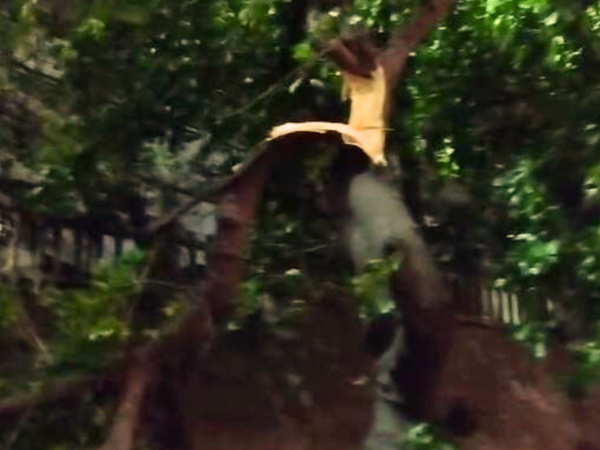Two people lost their lives and six were injured as a fierce dust storm hit Delhi, uprooting over 100 trees. The storm also resulted in injuries to seventeen people due to damaged buildings.Delhi Police received a flurry of distress calls, with 152 concerning uprooted trees. They managed 55 calls about building damages and 202 regarding power outages. The authorities worked through the night addressing the aftermath of the storm.

IMD observations
The India Meteorological Department (IMD) recorded wind speeds of up to 77 km/h in certain parts of the city. IMD officials warned of the possibility of a similar storm hitting the city on Saturday, with rain expected during the night.
Why sudden dust storm and thunder storm hit Delhi
Kuldeep Srivastava, a scientist at IMD, said that the storm was the result of a combination of factors including a western disturbance, easterly winds, and high temperatures that led to the formation of convective clouds and such strong winds.
What are thunderstorms and dust storms
A thunderstorm is characterised by lightning and thunder, resulting from electrical discharges in a vertically developed cloud. A dust storm, on the other hand, involves turbulent wind lifting dust or sand particles to great heights, often reducing visibility significantly.

Role of weastern disturbances
Western disturbances are extratropical storms from the Mediterranean that cause winter rain in the northwestern Indian subcontinent. These disturbances play a crucial role in the development of the Rabi crop, including wheat, which is a staple in the region. The moisture from these storms is carried in the upper atmosphere and can lead to rain when encountering the Himalayas.
What are easterlies
The trade winds, also known as easterlies, are constant winds that blow from east to west in the Earth’s equatorial region. These winds originate primarily from the northeast in the Northern Hemisphere and the southeast in the Southern Hemisphere. The trade winds tend to intensify during the winter months and when the Arctic Oscillation is in its warm phase.

Impact on daily life and agriculture
The sudden storm caused significant inconvenience to Delhi residents, with the uprooted trees and traffic jams affecting mobility. The predictions for more storms over the weekend meant that people had to prepare for potential disruptions.
The occurrence of such storms also has important implications for agriculture, particularly for the Rabi crops that rely on the precipitation brought by western disturbances.
In conclusion, the dust storm in Delhi serves as a reminder of the city’s vulnerability to sudden weather changes and the importance of timely advisories from meteorological departments.
